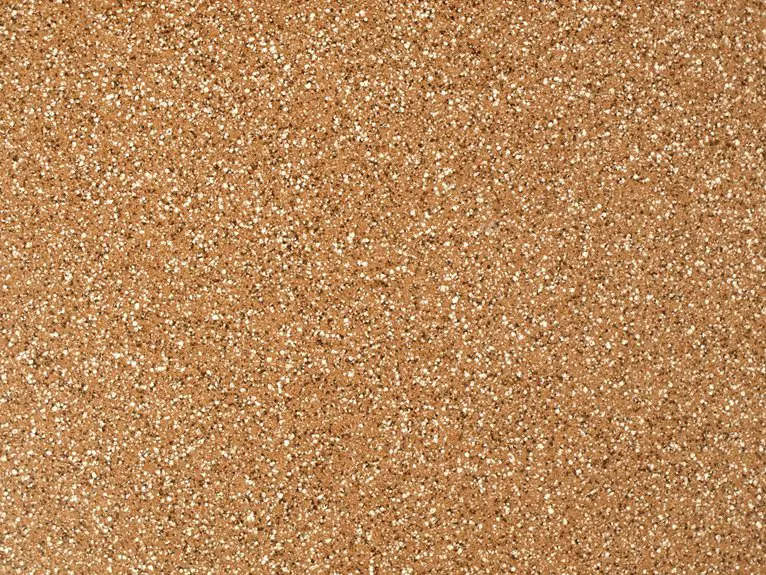If you think scrim fabric is just for drywall tape, think again. It’s a lightweight, durable material woven from fiberglass or polyester that reinforces roofing, plaster, stucco, waterproofing membranes, and insulation. It boosts strength, prevents cracks, and resists tearing while adding minimal bulk. You can choose different scrim types based on your project’s needs and environment. Keep exploring to see how scrim fabric can transform your building’s durability and flexibility.
Key Takeaways
- Scrim fabric enhances structural integrity by evenly distributing stress and preventing cracks beyond drywall applications.
- It reinforces roofing, plaster, stucco, and waterproofing systems for improved durability and tear resistance.
- Lightweight scrim provides strong support without adding bulk, suitable for insulation and flexible construction materials.
- Fiberglass or polyester scrims are chosen based on environmental factors like moisture, UV exposure, and stress levels.
- Scrim fabric’s versatility and cost-effectiveness reduce repair needs across various building and construction uses.
What Is Scrim Fabric and How Is It Made?
Scrim fabric is a lightweight, loosely woven material that provides strength and stability in construction projects.
When you look closer, you’ll see it’s made by weaving thin yarns or threads, usually fiberglass or polyester, into a grid-like pattern. This open weave keeps the fabric light but tough.
You’ll often find scrim made using a loom, which interlaces the threads tightly but leaves enough space for flexibility.
After weaving, the fabric might go through treatments, like coating with adhesives or fire retardants, depending on what the job requires. This process guarantees scrim fabric holds up well under stress and environmental factors.
Key Benefits of Using Scrim Fabric in Construction
Understanding how scrim fabric is made helps reveal why it’s so valuable in construction. Its woven structure provides strength without adding much weight, which means you can rely on it for reinforcement without worrying about bulk.
Scrim fabric’s woven design offers strong reinforcement while keeping materials lightweight and manageable.
When you use scrim fabric, you benefit from:
- Enhanced durability and resistance to tearing
- Lightweight yet strong material support
- Improved crack resistance in surfaces
- Easy integration with various construction materials
- Cost-effectiveness due to reduced repair needs
Common Applications of Scrim Fabric Beyond Drywall Tape
Although many people associate scrim fabric primarily with drywall tape, you’ll find it used in a variety of other construction applications.
For example, scrim fabric often reinforces roofing materials, adding durability and resistance to tearing. You’ll also see it in plaster and stucco systems, where it helps prevent cracking and improves adhesion.
Additionally, scrim fabric is used in waterproofing membranes to enhance flexibility and strength, ensuring long-lasting protection against moisture. It’s even found in insulation products, providing structural support without adding bulk.
How Scrim Fabric Enhances Structural Integrity
When you incorporate scrim fabric into building materials, it greatly boosts their structural integrity by distributing stress more evenly across surfaces. This reinforcement helps prevent cracks and weaknesses that often develop under pressure or over time.
You’ll find scrim fabric invaluable in areas prone to movement or impact, as it strengthens joints and enhances durability.
Here’s how scrim fabric enhances structural integrity:
Scrim fabric reinforces structures by improving load distribution and resisting environmental stress for lasting strength.
- Reinforces weak points to resist tearing and splitting
- Improves load distribution across panels and walls
- Increases resistance to environmental stress like wind and vibration
- Enhances bonding between layers of composite materials
- Provides flexibility without compromising strength
Choosing the Right Scrim Fabric for Your Building Project
How do you choose the right scrim fabric for your building project? Start by considering the specific application—whether you need reinforcement for drywall, plaster, or exterior insulation.
Next, evaluate the fabric’s material; fiberglass scrim is durable and resistant to moisture and chemicals, making it ideal for high-stress environments. Polyester scrim offers flexibility and is great for lighter applications.
Check the mesh size and weight to guarantee it provides adequate support without adding unnecessary bulk. Also, confirm compatibility with your chosen adhesives or coatings to avoid bonding issues.
Finally, think about environmental factors like exposure to UV rays or humidity, which can influence fabric performance. By focusing on these factors, you’ll select scrim fabric that strengthens your project effectively and lasts longer.
Frequently Asked Questions
Can Scrim Fabric Be Recycled After Construction Use?
You can recycle scrim fabric after construction, but it depends on the material type and local recycling facilities. Check with your local recycler to verify they accept it, so you don’t accidentally contaminate other recyclable materials.
How Does Scrim Fabric Compare Cost-Wise to Traditional Materials?
Think of scrim fabric as a budget-friendly superhero; it often costs less than traditional materials, saving you money without sacrificing strength or durability. You’ll find it’s a smart, cost-effective choice for your building projects.
Are There Environmental Concerns With Scrim Fabric Production?
You might worry about environmental concerns since scrim fabric production can involve synthetic fibers and energy use. However, choosing eco-friendly options or recycled materials can reduce its environmental impact considerably, making your choice greener.
What Maintenance Is Required for Scrim Fabric in Outdoor Applications?
Just like a well-oiled horseless carriage, your scrim fabric outdoors needs regular inspections for tears or dirt. You’ll want to clean it gently with mild soap and water, avoiding harsh chemicals to keep it durable and pristine.
Can Scrim Fabric Be Used in Historic Building Restorations?
You can definitely use scrim fabric in historic restorations. It reinforces surfaces without altering original materials, preserving integrity. Just verify compatibility with existing structures and choose appropriate adhesives to maintain the building’s authentic character.

